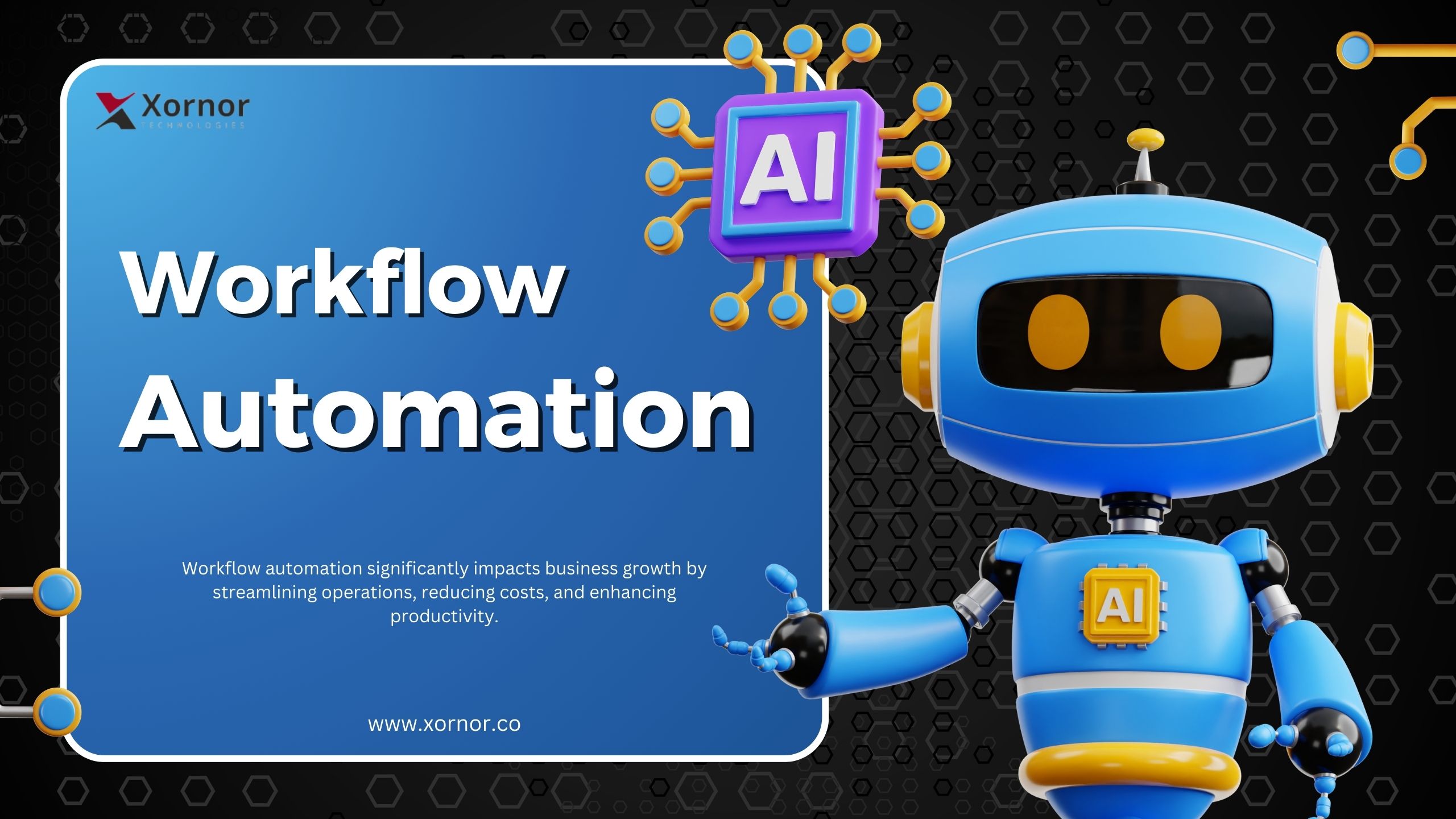
In today’s era, everything is growing rapidly, so businesses are always finding various ways to improve productivity and streamline operations. Workflow automation is a solution that has become very popular. Workflow automation helps companies plan and execute regular operations using cutting-edge technologies. This leads to more productivity, fewer mistakes, and significant time savings.
Comprehending Workflow Automation
Automating repeated manual operations within an organization is known as workflow automation. By optimizing workflows with specialist software and solutions, firms can attain operational excellence and increased productivity. Workflow automation minimizes human error, expedites task completion, and lessens the need for human supervision by mapping complex processes and generating a logical series of automated activities. This guarantees constant and foreseeable results, irrespective of the intricacy or quantity of tasks involved.
Key Advantages of Workflow Automation
Increased Productivity: Workflow automation saves time by doing away with manual and repetitive operations, allowing staff members to concentrate on high-value work. As a result, jobs take a lot less time to accomplish, increasing overall efficiency.
Error reduction:
We generally see human-generated errors, when we do a particular task manually. By eliminating the need for human data entry, computation, and decision-making, workflow automation reduces these risks and improves accuracy and dependability.
Cost Savings:
Workflow automation lowers operating expenses. It reduces the need for more employees, maximizes the use of available resources, and lowers the costs related to mistakes and redo. Organizations can serve more clients or customers more effectively by completing activities faster thanks to streamlined workflows.
Improved Transparency and Insight:
Through Workflow automation, we can get real-time updates on various tasks. This contributes to increased transparency by improving tracking, monitoring, and reporting. Managers can make improved decisions based on the data insights they possess which helps find any blockers that can occur and evaluate the performance metrics.
Scalability and Adaptability:
The tools built for workflow automation are built in such a way that they help grow a business and change according to the business requirements. Automated workflows can be scaled and adjusted to suit organizational demands, whether they are associated with managing rising workloads, integrating with other software systems, or adhering to industry standards.
Workflow Automation’s Practical Uses
Employee Onboarding:
Automated onboarding systems start email campaigns and send out notifications to new hires. They lead them through the process and make sure they get the help and information they need.
Incident Tracking:
Incident management is more effective when it is automated. It makes gathering information easier, transferring data to health and safety experts, and facilitating data analysis to create preventive actions.
Risk Assessments and Corrective Actions:
Automation keeps a current information repository, which guarantees proactive risk control. It decreases occurrences of non-compliance by streamlining tracking, compliance, and inspections.
Educational Institutions:
Automation helps send reminders to staff, keep track of work, and assignments, trigger holiday emails, and send report cards to students and parents.
Purchase Order Approval:
By eliminating manual processing problems, improving procurement efficiency, and guaranteeing timely approvals, automating purchase order approvals reduces costs and saves time.
Automation streamlines the process of monitoring overtime, making it easier for managers to review, contest, and approve logs. This lowers the amount of time spent on manual recording and enhances project planning.
In summary, Workflow automation is transforming corporate procedures in a number of industries by cutting costs, increasing efficiency, and minimizing errors. Organizations can attain greater levels of operational excellence and productivity by incorporating process automation into their operations. Workflow automation’s reach and influence will only grow with the development of technology, providing new chances for companies to prosper in a cutthroat market.